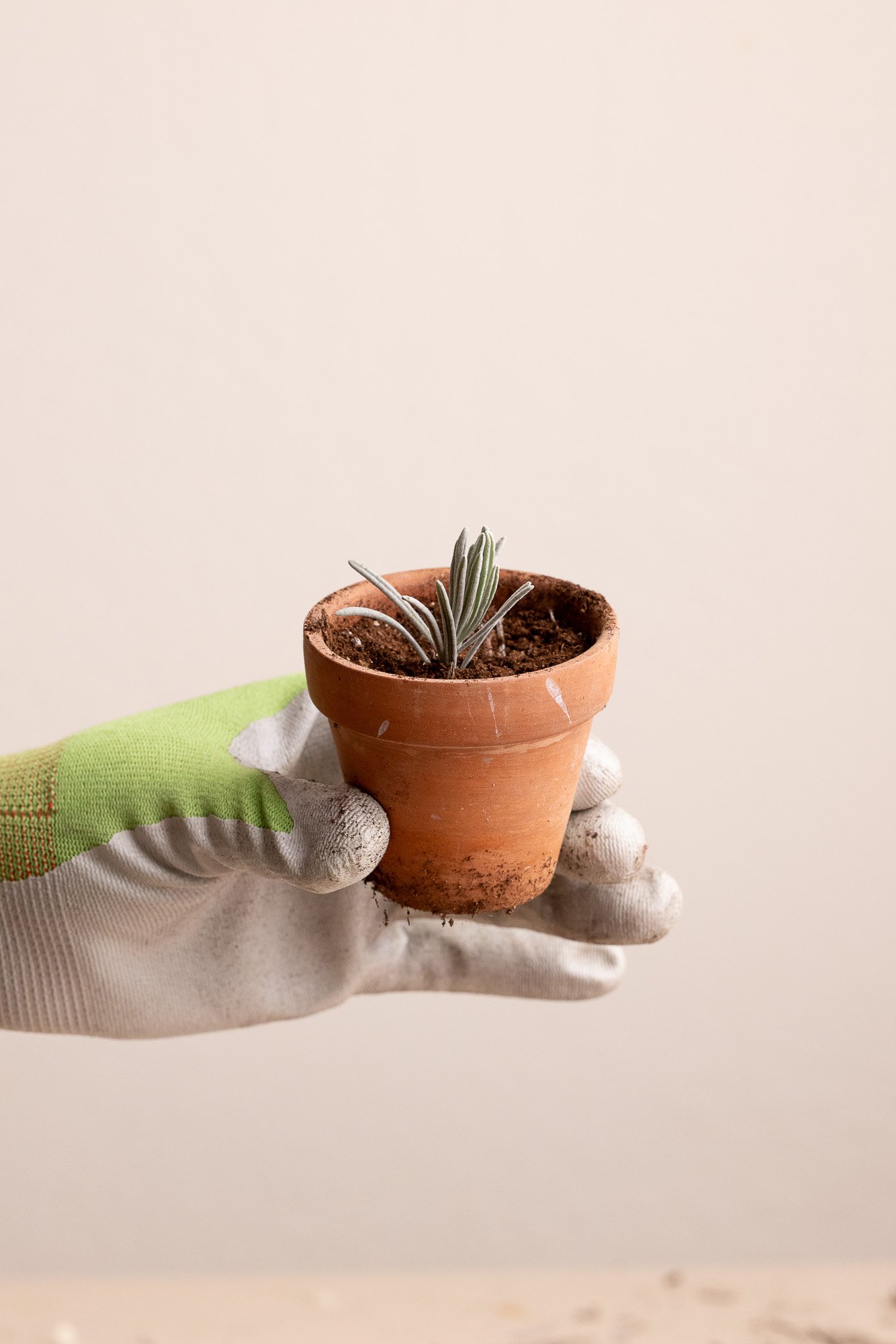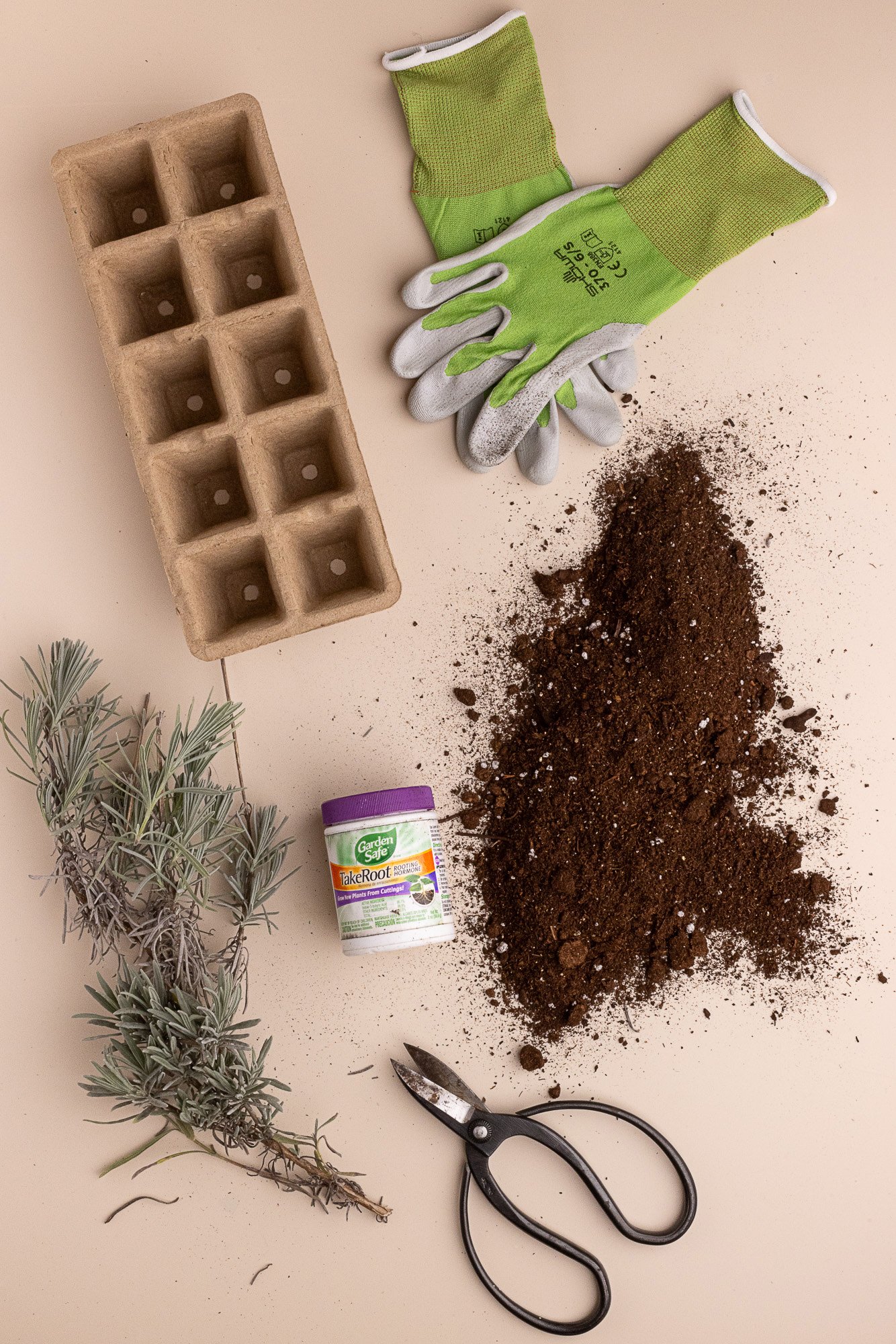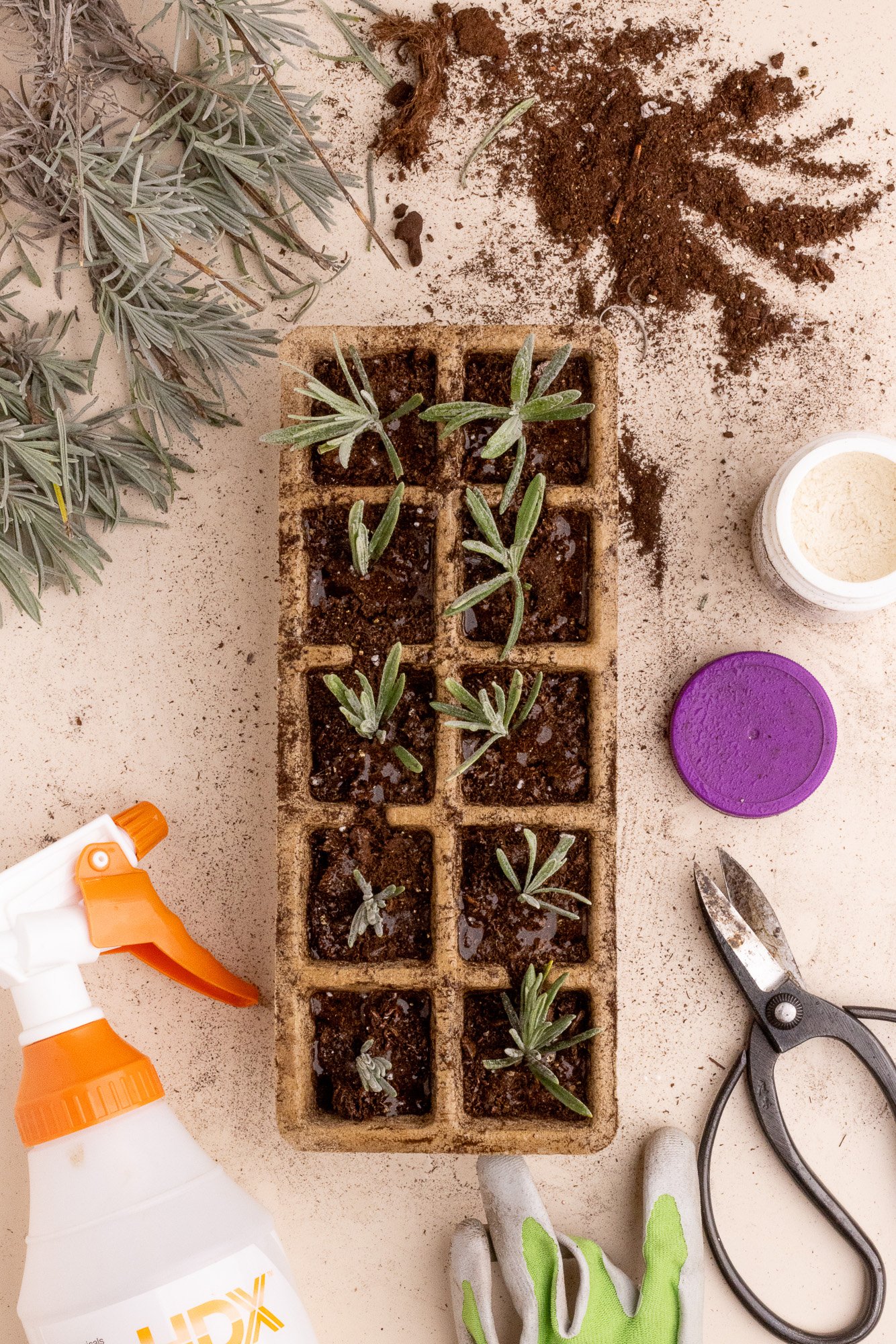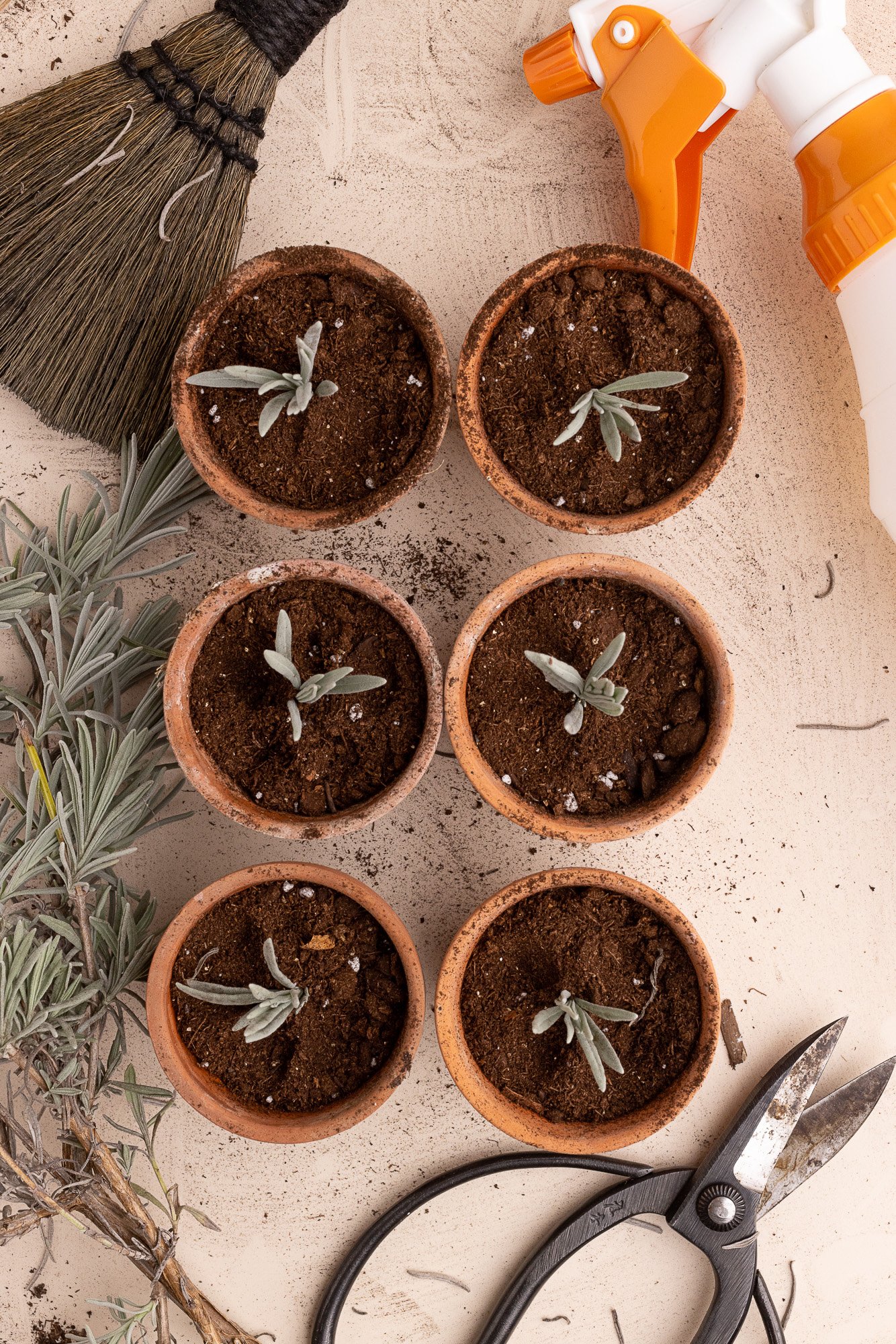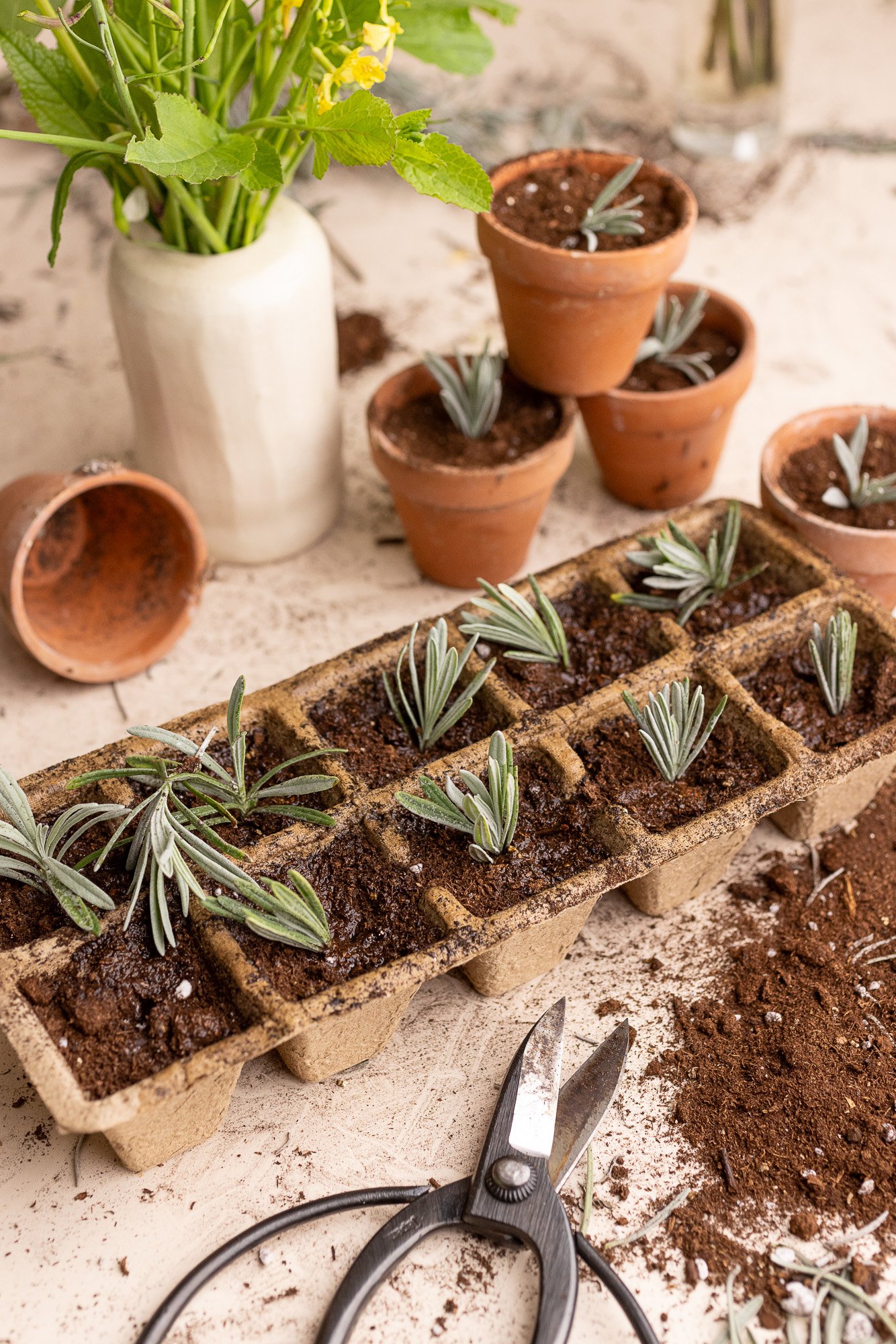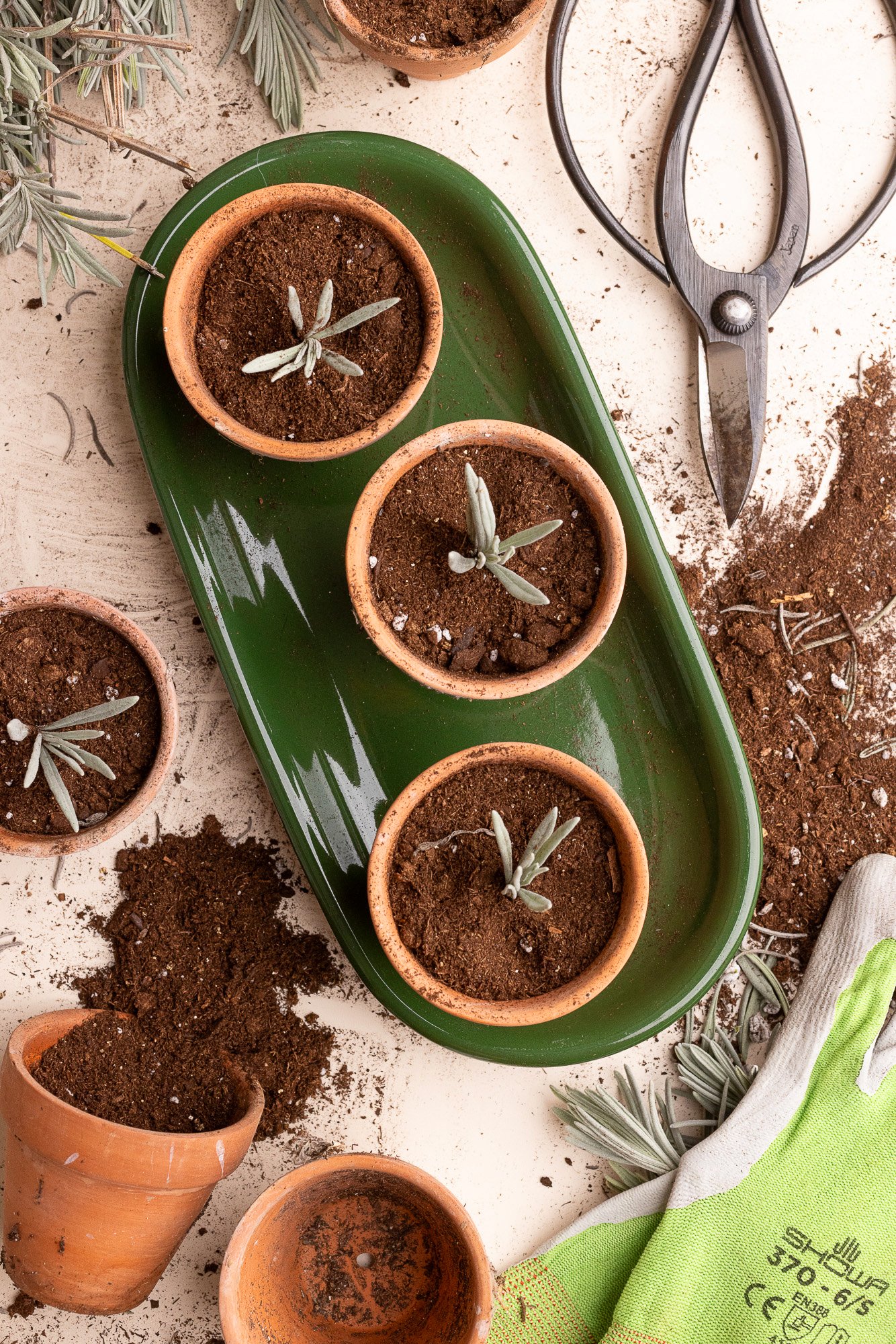Propagate Lavender
Lavender, with its delicate purple blooms and soothing fragrance, is a beloved addition to gardens worldwide. Beyond its ornamental value, lavender boasts a plethora of culinary, medicinal, and aromatic uses. Propagating lavender is not only a rewarding but also surprisingly easy, allowing you to expand your lavender patch effortlessly OR gift these gorgeous plants to others. In this post, we'll delve into the art of propagating lavender, exploring various methods and tips to ensure success.
This post may contain affiliate links, meaning I get a commission if you decide to make a purchase through my links, at no cost to you
Propagating in Soil: Simple and Effective
Propagating lavender in soil is perhaps the most common method, favored for its simplicity and reliability. To begin, gather healthy, non-flowering stems from a mature lavender plant. Choose stems that are neither too young nor too woody, typically around 4-6 inches in length. Prepare a well-draining potting mix, preferably with perlite or sand added to enhance drainage. Remove the lower leaves from the cutting, leaving only a few at the top. Dip the cut end into rooting hormone powder, which stimulates root growth and improves the chances of successful propagation.
Insert the cutting into the soil, ensuring at least two nodes are buried beneath the surface. Nodes are the points on the stem where leaves emerge, and they contain cells that can develop into roots. Water the soil lightly and place the pot in a warm, sunny location, ensuring it receives indirect sunlight.
With patience and care, roots should begin to form within a few weeks. Keep the soil consistently moist but not waterlogged, and avoid overwatering, as lavender is susceptible to root rot.
Timing is Key: How Long Until Rooting?
Lavender cuttings typically take anywhere from two to six weeks to develop roots, depending on various factors such as environmental conditions, the health of the cutting, and the lavender variety. Warmer temperatures and higher humidity levels can expedite the rooting process, while cooler conditions may prolong it.
Regularly check the cuttings for signs of root development by gently tugging on the stem. If you feel resistance, roots have likely formed, indicating that it's time to transplant the cutting into its permanent location.
Rooting Hormone: A Gardener's Secret Weapon
Rooting hormone is a valuable tool in the propagation arsenal, facilitating faster and more consistent root growth. Available in powder, gel, or liquid form, rooting hormone contains synthetic or naturally occurring auxins, which stimulate cell division and root formation. When using rooting hormone, ensure the cutting's end is evenly coated before planting it in the soil. While not essential for successful propagation, rooting hormone significantly increases the likelihood of success, especially when propagating challenging or woody species like lavender.
Taking Cuttings from Mature Lavender Plants: Harvesting with Care
The key to successful propagation lies in harvesting healthy cuttings from vigorous parent plants. When selecting cuttings, opt for stems that are free from disease, pests, or physical damage. Choose sections of the plant that are actively growing but not yet in bloom, as flowering stems tend to root less successfully.
Use clean, sharp scissors or pruning shears to make clean cuts, minimizing damage to the parent plant. Aim for cuttings that are 4-6 inches in length, with at least two sets of leaves intact. Remove any flowers or buds from the cutting, as these divert energy away from root development.
Exploring Lavender Varieties
Lavender encompasses a diverse array of species and cultivars, each with its unique characteristics and growth habits. Common lavender varieties include English lavender (Lavandula angustifolia), French lavender (Lavandula stoechas), and Spanish lavender (Lavandula dentata). Within each of these categories exist a myriad of sub species. There are subtle differences in each plant variety with regards to the shade of purple, the adult size of the plant and intensity of flavor. It is a fascinating plant and I highly encourage you to discover each type and what their strength is.
For example, English lavender, prized for its intense fragrance and compact growth habit, is perhaps the most popular choice for cultivation and propagation. French lavender, distinguished by its distinctive butterfly-like blooms, thrives in warmer climates and well-drained soils. Spanish lavender, recognized for its toothed leaves and showy bracts, adds a splash of color to garden borders and containers.
Propagating in Water: An Alternative Approach
While soil propagation is the easiest method however propagating lavender in water offers an alternative method for those seeking to experiment or propagate indoors. Simply place the lavender cutting in a glass of water, ensuring the nodes are submerged while the leaves remain above the waterline. Change the water every few days to prevent stagnation and algae growth, and place the glass in a bright, indirect light location. Root development should occur within a few weeks, at which point you can transplant the cutting into soil.
Lavender plant benefits: A Pollinator Paradise
Lavender stands out for its ability to captivate not only human senses but also those of the smallest creatures. Its fragrant blooms and delicate hues, serves as a beacon for pollinators, drawing them in. There is a fascinating relationship between lavender and pollinators and this beloved herb plays in supporting biodiversity and ecosystem health.
Bees are drawn to lavender like magnets, lured by the promise of abundant nectar reserves hidden within each delicate blossom. While bees may steal the spotlight when it comes to pollinating lavender, they are by no means the only visitors to this floral.. Butterflies, also flock to lavender in search of nectar. Hoverflies, beetles, and other beneficial insects likewise partake in the lavender feast, contributing to the rich tapestry of life that thrives within the garden ecosystem.
By providing a reliable source of food for pollinators throughout the growing season, lavender helps sustain populations of beneficial insects that play essential roles in pollination, pest control, and ecosystem functioning. In doing so, lavender contributes to the overall health and vitality of the garden, fostering a harmonious balance between plant and animal life.
Without further ado, here is the recipe:

Propagate Lavender
Ingredients
Instructions
How to Propagate Lavender
In conclusion, propagating lavender is a gratifying endeavor that allows you to multiply your favorite plants with ease. Whether you opt for soil propagation, water propagation, or a combination of both, the key lies in patience, attention to detail, and a little bit of botanical know-how. With these tips in hand, you'll soon find yourself surrounded by flourishing lavender plants, enriching your garden and your senses alike.

